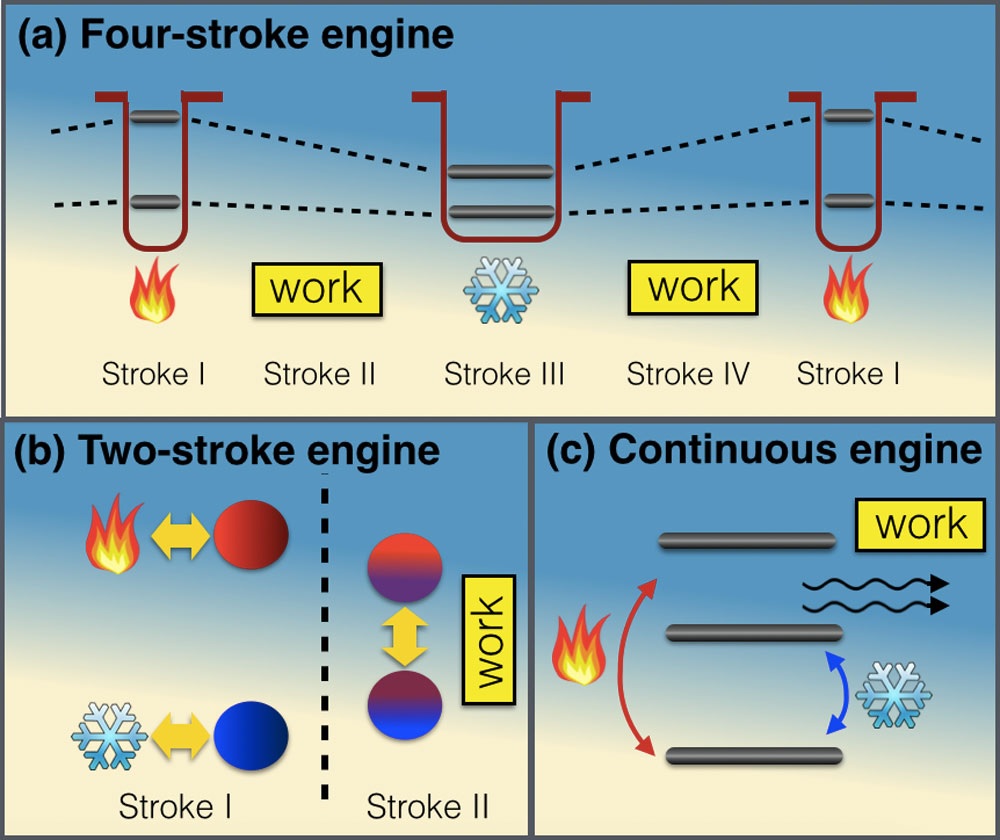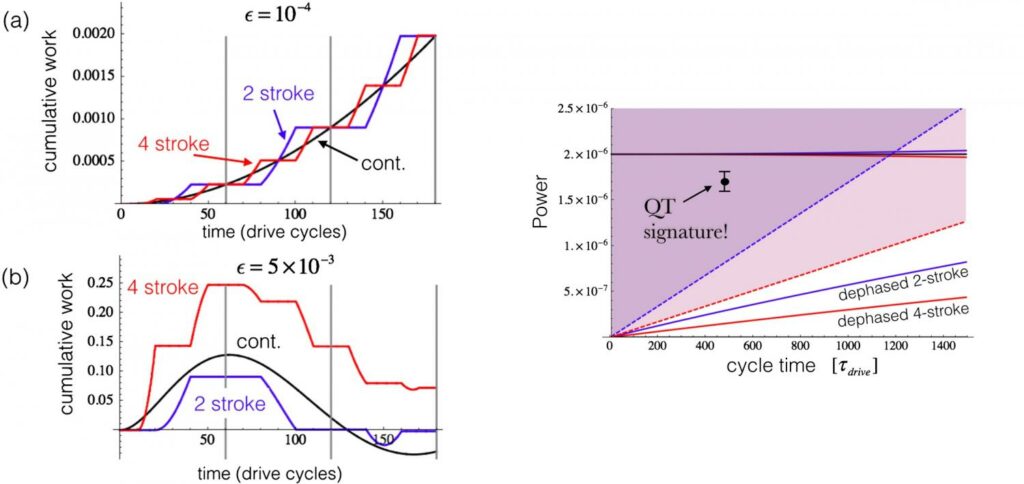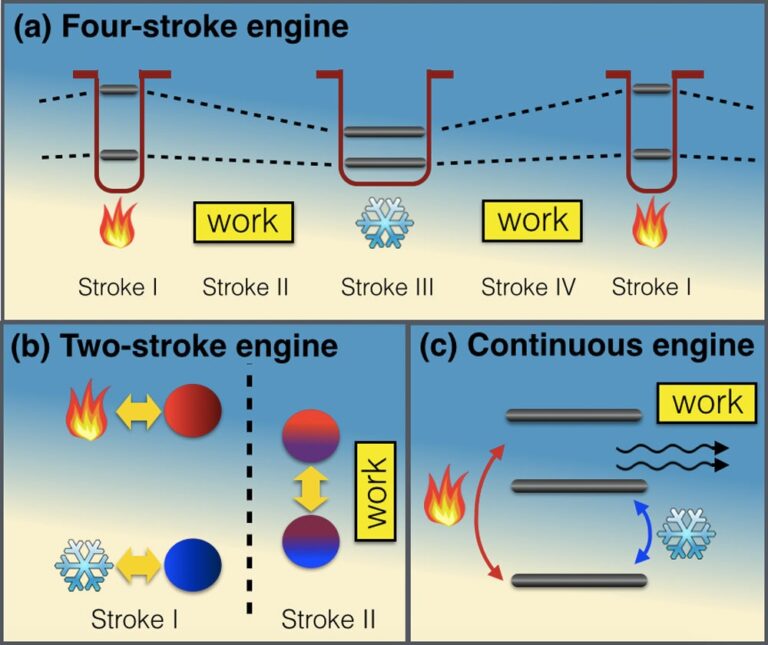What is quantum in quantum thermodynamics?
A lot of attention has been given to the differences between the quantum and classical worlds. For example, quantum entanglement, superposition, and teleportation are purely quantum phenomena with no classical counterparts. However, when it comes to certain areas of thermodynamics—specifically, thermal engines and refrigerators—quantum and classical systems so far appear to be nearly identical. It seems that the same thermodynamic laws that govern the engines in our vehicles may also accurately describe the tiniest quantum engines consisting of just a single particle.
In a new study, physicists Raam Uzdin, Amikam Levy, and Ronnie Kosloff at the Hebrew University of Jerusalem have investigated whether there is anything distinctly quantum about thermodynamics at the quantum level, or if “quantum” thermodynamics is really the same as classical thermodynamics.
For the first time, they have shown a difference in the thermodynamics of heat machines on the quantum scale: in part of the quantum regime, the three main engine types (two-stroke, four-stroke, and continuous) are thermodynamically equivalent. This means that, despite operating in different ways, all three types of engines exhibit all of the same thermodynamic properties, including generating the same amounts of power and heat, and doing so at the same efficiency. This new “thermodynamical equivalence principle” is purely quantum, as it depends on quantum effects, and does not occur at the classical level.

The scientists also showed that, in this quantum regime where all engines are thermodynamically equivalent, it’s possible to extract a quantum-thermodynamic signature that further confirms the presence of quantum effects. They did this by calculating an upper limit on the work output of a classical engine, so that any engine that surpasses this bound must be using a quantum effect—namely, quantum coherence—to generate the additional work. In this study, quantum coherence, which accounts for the wave-like properties of quantum particles, is shown to be critical for power generation at very fast engine cycles.
“To the best of my knowledge, this is the first time [that a difference between quantum and classical thermodynamics has been shown] in heat machines,” Uzdin told Phys.org. “What has been surprising [in the past] is that the classical description has still held at the quantum level, as many authors have shown. The reasons are now understood, and in the face of this classicality, people have started to stray to other types of research, as it was believed that nothing quantum can pop up. Thus, it was very difficult to isolate a generic effect, not just a numerical simulation of a specific case, with a complementing theory that manages to avoid the classicality and demonstrate quantum effects in thermodynamic quantities, such as work and heat.”

One important implication of the new results is that quantum effects may significantly increase the performance of engines at the quantum level. While the current work deals with single-particle engines, the researchers expect that quantum effects may also emerge in multi-particle engines, where quantum entanglement between particles may play a role similar to that of coherence.
This article is republished from PhysORG under a Creative Commons license. Read the original article.
Do not forget to share your opinion with us to provide you with the best posts !




0 Comments